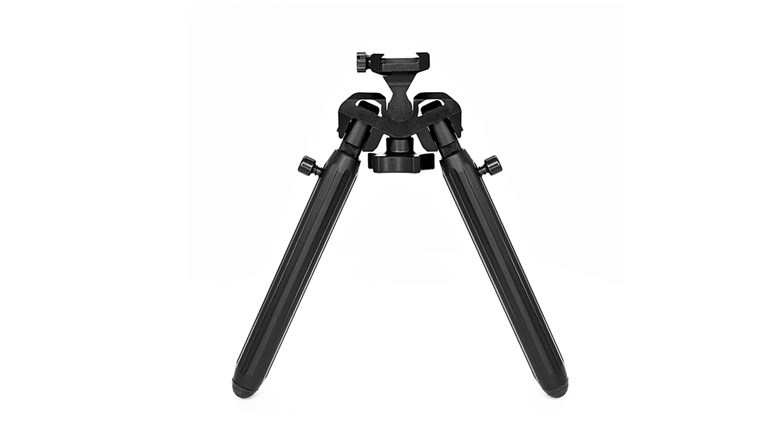
WARNING: All technical data in this publication, especially for handloading, reflect the limited experience of individuals using specific tools, products, equipment and components under specific conditions and circumstances not necessarily reported in the article and over which the National Rifle Association (NRA) has no control. The data has not otherwise been tested or verified by the NRA. The NRA, its agents, officers and employees accept no responsibility for the results obtained by persons using such data and disclaim all liability for any consequential injuries or damages.
Above: (from top to bottom) 6mm BR, 6.5/284, 7mm R-SAUM, and .300 Winchester.
In this article, we’ll give a quick overview of cartridge case efficiency and its benefits.
Due to time and space limitations, we cannot cover this topic in depth, but will address certain key aspects that newer handloaders may want to consider. Once familiar with these issues, one is better equipped to evaluate calibers under consideration.
While this is oriented primarily toward NRA high power rifle and long-range (1000 yard) competition, these factors also apply to medium/big game hunters. Assuming one’s rifle and ammunition are accurate, key considerations include ballistic performance (i.e., resistance to wind effects, plus trajectory), recoil, throat erosion and barrel life.
Whether choosing a cartridge for competition or hunting, the availability of bullet designs suitable for your caliber, velocity and your range to target is very important. For hunters, a bullets’ terminal performance at typical striking velocities on expected game is essential. Do available bullets expand, penetrate adequately, fragment vs. hold together, etc.?
For competitive shooters, this issue is moot; rather, pristine accuracy and ballistic performance in the wind are critical. Flat trajectory benefits the hunter who may shoot at long, unknown distances (nowadays, rangefinders help). However, this is of much less importance to competitors firing at known distances.
Recoil is an issue, particularly when one fires long strings during competition, and/or multiple strings in a day. Its effects are cumulative; cartridges with medium/heavy recoil can lead to shooter fatigue, disturbance of the shooting position and lower scores. Some find this more of an issue than others, of course.
For hunters, who may only fire a few shots a year, recoil that does not induce flinching during sight-in, practice and hunting is a deciding factor. Depending on their game and ranges, etc., they may accept more recoil than the high-volume high power or long-range competitor.
Likewise, throat erosion and barrel life is important to competitive shooters, who fire thousands of rounds in practice and matches, vs. the medium and big game hunter. A cartridge that performs well ballistically with great accuracy, has long barrel life and low recoil is the competitive shooter’s ideal. For the hunter, other factors may weigh more heavily.
Efficient cartridges make excellent use of their available powder and case/bore capacity. They yield good ballistic performance with relatively little recoil and throat erosion. A classic example in the author’s experience involved a featherweight 7x57mm hunting/silhouette rifle. When loaded to modern-rifle pressures, just 43-44-gr. powder pushed a 139-gr. bullet at 2900 fps from its 22-inch barrel. Recoil in this light rifle was mild; it was very easy to shoot well, and its performance was superb.
An acquaintance chose a “do everything” 7mm Remington Magnum … for use on medium game at short ranges. A larger, heavier rifle, used approximately 65-gr. powder to achieve about 3200 fps with similar bullets—from its 26-inch barrel. Recoil was higher, and he was sensitive to it, which hampered his shooting ability.
Note: An increase in powder weight adds significantly more recoil than the same weight would, if it were added to the bullet instead.) I.e., 20-gr. more powder increased recoil much more than a 20-gr. increase in bullet weight would. To this, add increased barrel heat and erosion, especially for competitive shooters.
Similarly efficient calibers include the 6mm BR vs. .243, and others. Today’s highly-efficient calibers, such as 6mm BR and a host of newer developments might use, say, 28-30-gr. powder to launch a 105-107-gr. match bullet at speeds approaching the .243. The .243 needs approximately 40-45-gr. charges at the same velocity.
Champion-level long-range shooters need every ballistic edge feasible. They compete at a level where one inch more or less drift in a wind change could make the difference between winning and losing. Shooters recognized this early on—the then-new .300 H&H Magnum quickly supplanted the .30-06 at the Wimbledon winner’s circle in the early days.
The .300 Winchester Magnum became popular, but its 190-220-gr. bullets had their work cut out for them once the 6.5/284 and its streamlined 140-142-gr. bullets arrived on the scene. The 6.5/.284 gives superb accuracy and wind performance with about half the recoil of the big .30 magnums—albeit it is a known barrel-burner.
Currently, the 7mm Remington Short Action Ultra-Magnum, a.k.a. 7mm R-SAUM, is giving stellar accuracy with cutting-edge 180-ish-gr. bullets, powder charges in the mid-50’s-gr. range and velocities about 2800-plus fps in long barrels. Beyond pure efficiency, its modern, “short and fat” design helps ensure fine accuracy relative to older, longer cartridge designs of similar performance.
Recent design advances are yielding bullets with here-to-fore unheard-of ballistic efficiency; depending on the cartridge, they can make or break ones decision. Ballistic coefficients (“B.C.”—a numerical expression of a bullets’ ballistic efficiency) are soaring to new heights, and there are many exciting new avenues to explore.
The foregoing covers a lot of ground very rapidly; each topic rates serious study by itself, but that’s not possible here. However, we hope that in mentioning these issues, newer handloaders and competitors will study them and increase their ability to assess calibers comprehensively.
The ideal choice will likely be a carefully-considered balancing act between bullet B.C.’s, case capacity, velocity, barrel life and recoil. But, as with new car decisions, choosing can be half the fun!
SSUSA thanks the U.S. Army Marksmanship Unit for allowing the reprint of this article.


































